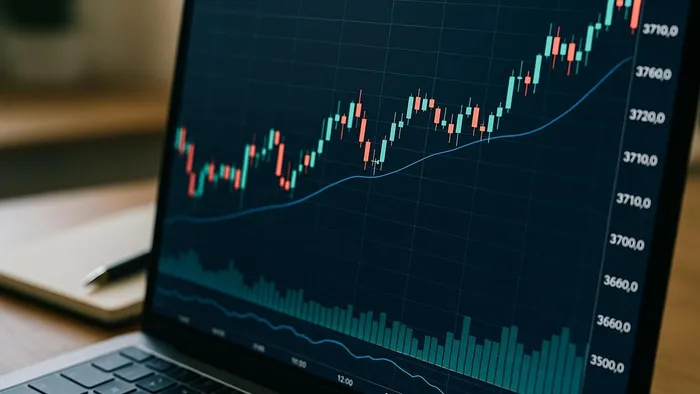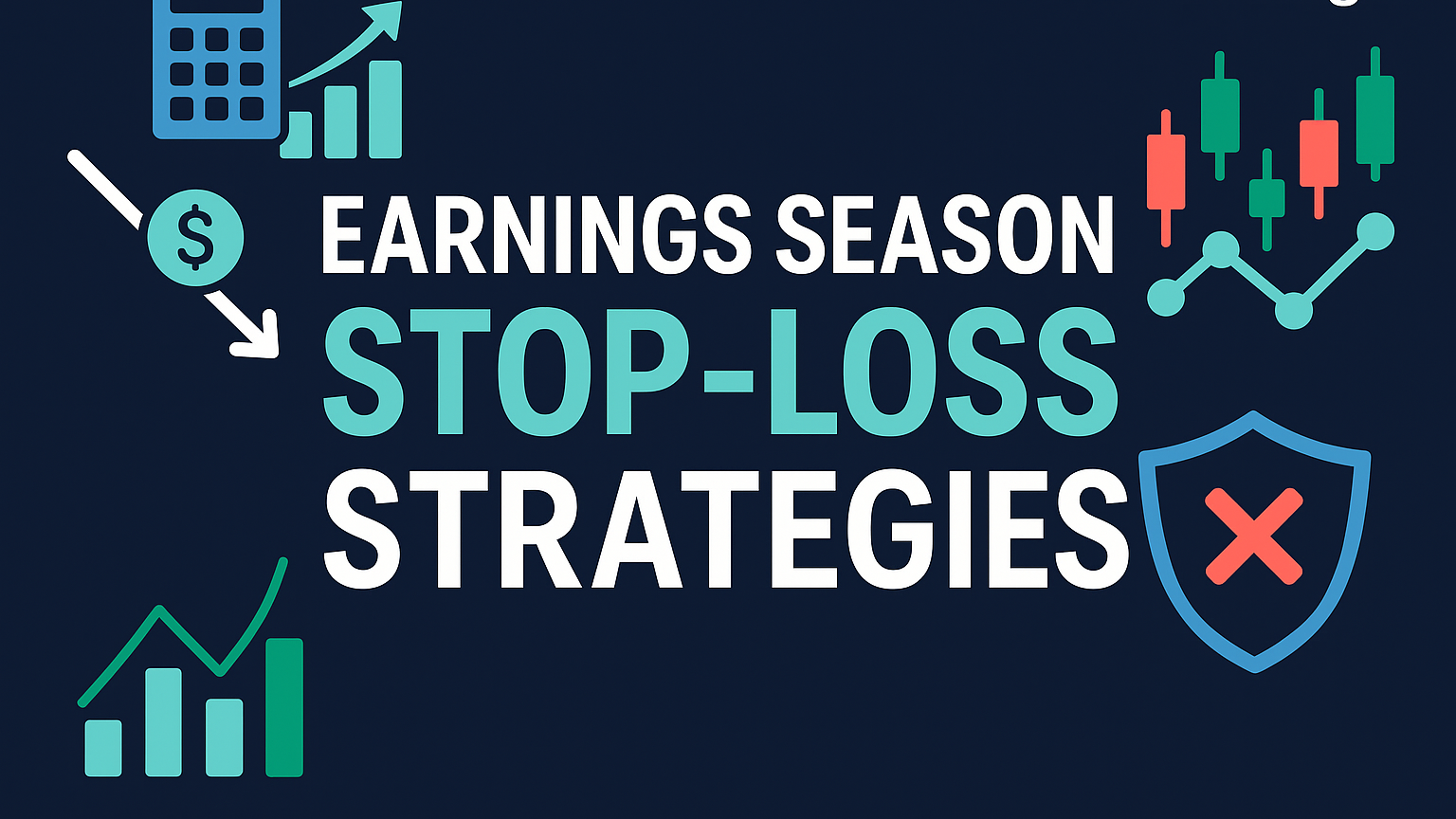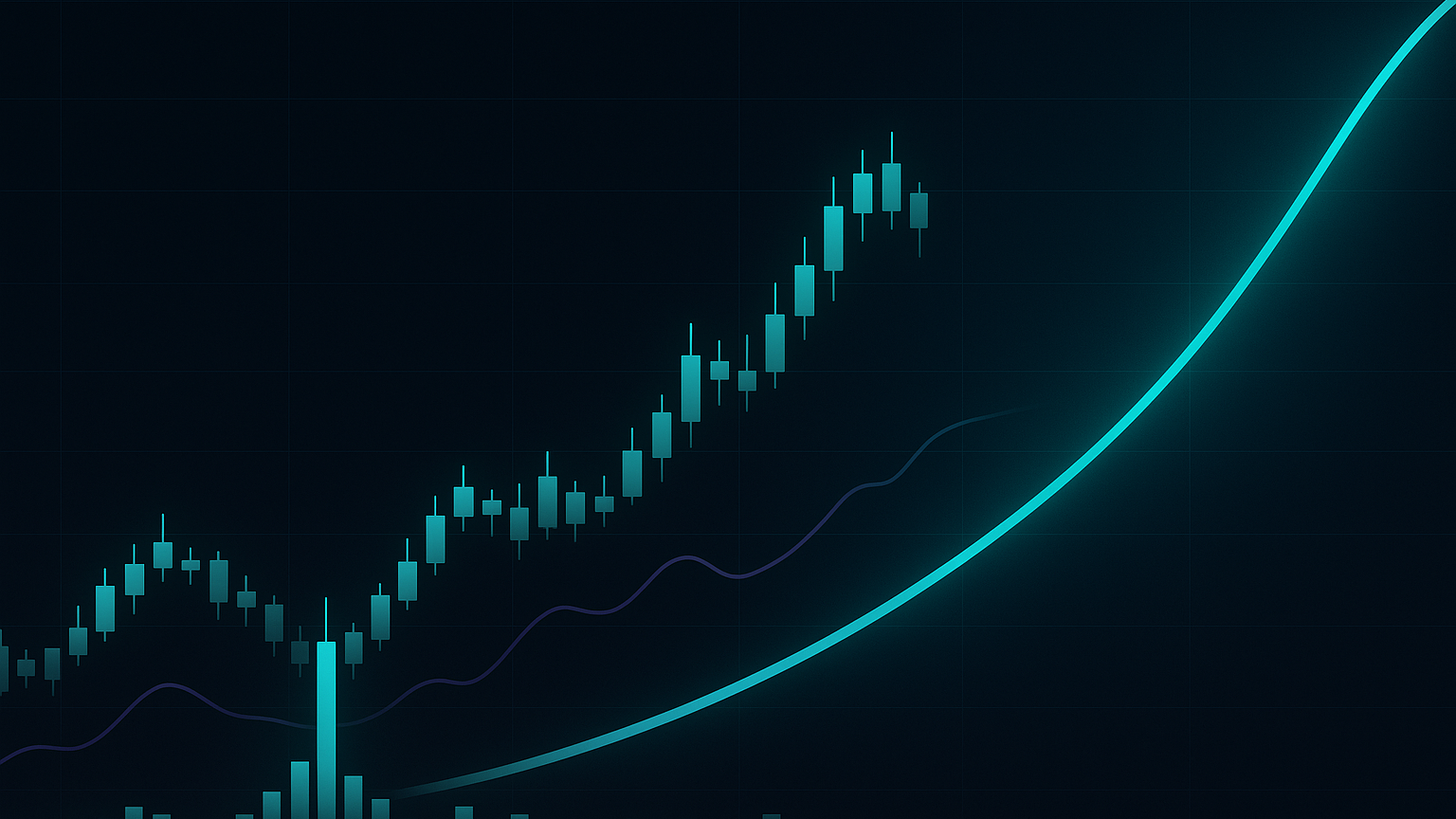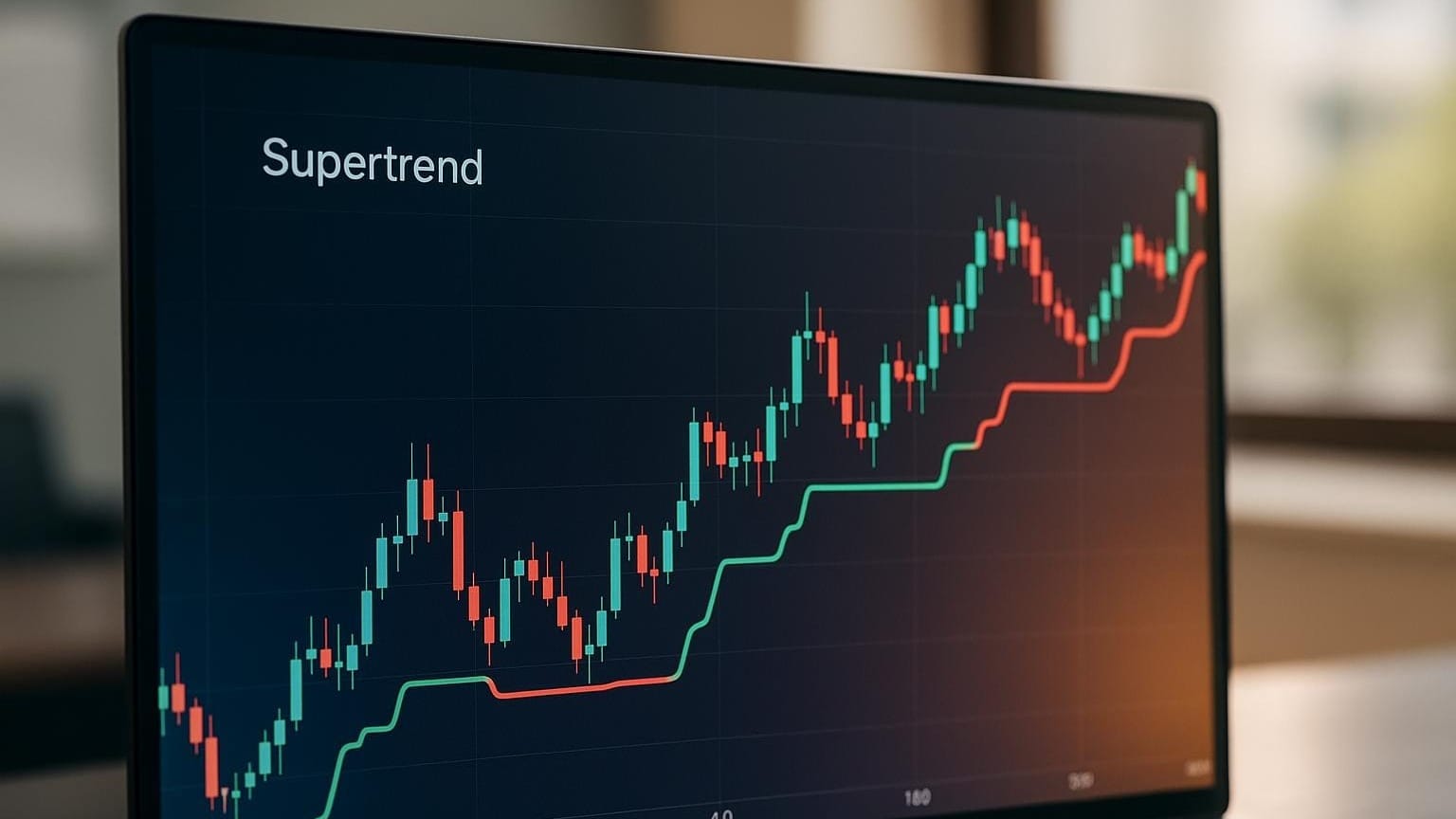Learn effective strategies to maintain emotional control and avoid impulsive trading decisions after losses, ensuring long-term trading success.
Losing trades can trigger emotional reactions that lead to poor decisions, such as panic selling or revenge trading. These behaviors often stem from loss aversion, where the pain of losing feels twice as intense as the joy of winning. To prevent this, focus on emotional control and disciplined strategies:
- Panic Trading: Fear-driven exits or avoidance of new trades.
- Revenge Trading: Over-leveraging or chasing losses impulsively.
- Emotional trading undermines long-term success by increasing losses and reducing consistency.
Key steps to regain control include:
- Self-Awareness: Recognize emotional triggers such as fear, greed, or frustration.
- Trading Journal: Track emotions, physical signs, and market conditions for patterns.
- Mindfulness: Use breathing exercises and meditation to stay calm.
- Reframe Losses: Focus on lessons rather than monetary setbacks.
- Stick to a Plan: Predefined entry, exit, and risk rules prevent impulsive decisions.
- Automated Orders: Use stop-loss and take-profit orders to avoid emotional reactions.
- Long-Term Focus: Evaluate performance over weeks, not individual trades.
Using tools like LuxAlgo indicators and backtesting can help you stay objective and refine strategies based on data, not emotions. Losses are inevitable, but managing your response ensures they do not derail your progress.
Mastering Emotional Control in Trading: Top 7 Strategies
How to Spot Your Emotional Trading Triggers
Understanding what sparks your emotional reactions is key to maintaining discipline in trading. Recognizing these triggers builds on the discussion of emotional pitfalls and sets the stage for managing them effectively. While most traders know they should not let emotions dictate their decisions, spotting the exact moment when emotions start to take over requires a deeper level of self-awareness.
Why Self-Awareness Helps Avoid Bad Trading Decisions
Self-awareness acts like an internal alarm system, alerting you before emotions take the wheel. The ability to notice when your heart starts racing or when your thinking becomes clouded gives you a critical moment to pause and rethink your actions.
"Trading success is 85 % psychology and emotional control, outweighing technical analysis in importance for market performance" [1].
Top traders develop a skill to step back and observe their mental state as if from the outside. This detachment helps them see when fear causes them to exit a trade prematurely or when frustration drives them toward revenge trading. Without this level of awareness, you are essentially flying blind, unaware of how your emotions are steering your decisions.
Emotional triggers can generally be grouped into a few categories. Fear and anxiety often appear during sharp price drops or after a losing streak. Greed and overconfidence tend to surface following a series of wins or during a booming market. Frustration and anger usually creep in after long consolidation phases or missed opportunities [1].
Once you have developed self-awareness as a tool to counter poor decisions, the next step is keeping a detailed record of your emotions.
Track Your Emotions with a Trading Journal
A trading journal can serve as your personal emotional roadmap, uncovering patterns you might not notice otherwise. By documenting your feelings alongside your trades, you can better understand how emotions influence your decision-making.
"By reviewing entries in a comprehensive trading journal, one which includes all the aspects of importance regarding a trade, the trader can learn to distance emotions and trade rigorously." – Janice Dorn, Psychiatrist and Expert on Trading Psychology [2].
Your journal should include emotional ratings, physical symptoms, and the market conditions for each trade. Use a 1 – 10 scale to rate your emotions, with 1 representing calm confidence and 10 indicating extreme panic or greed. Record these ratings immediately after executing a trade while your feelings are still fresh [1].
Pay attention to physical cues as well. Did you feel your heart racing? Were your muscles tense? These physical signs often show up before you consciously realise you are stressed, making them valuable early indicators [1].
Also log the market context. Was there breaking news? Were you trading after a string of losses? Was it a particularly volatile session? This kind of detail helps you spot external factors that consistently trigger emotional reactions.
| Component | Details to Record |
|---|---|
| Date / Time | Exact timestamp |
| Emotion Rating | Pre- and post-trade scores |
| Trade Details | Entry, exit, position size |
| Market Context | Key levels, volatility |
| Physical Signs | Stress indicators |
| Action Plan | Adjustments for future trades |
Find Patterns in Your Emotional Trading Behaviour
After a few weeks of journaling, you will start to notice patterns. Maybe you overtrade in the afternoon when fatigue sets in, or perhaps you struggle to stick to your plan during major news events. These insights can help you predict and manage emotional responses in the future [1].
Focus on identifying the warning signs that lead to your worst decisions. These red flags often follow a predictable sequence:
| Trigger Event | Emotional State | Behavioural Warning Signs |
|---|---|---|
| Large or unexpected loss | Anger, frustration, panic | Increased trade size, ignoring stops, chasing |
| Losing streak | Desperation, self-doubt | Overtrading, random setups, deviating from plan |
| Missed opportunity (FOMO) | Regret, anxiety, impatience | Impulsive entries, ignoring risk rules |
| Giving back significant profits | Frustration, ego bruise | Aggressive trades, over-leveraging, widening stops |
| Post-winning streak (overconfidence) | Greed, carelessness | Excessive risk, reduced analysis, ignoring signals |
Use your 1 – 10 scale throughout the trading session, not just during trades. This real-time tracking helps you notice emotional shifts before they affect your decisions, giving you a chance to pause or adjust your approach [3].
Methods to Control Your Emotions While Trading
Once you have pinpointed what triggers your emotions while trading, the next step is learning how to manage them effectively. These techniques are not quick fixes for stressful moments; they work best when practised consistently.
Use Mindfulness to Stay Calm During Trading
Mindfulness acts as a buffer between your emotions and your trading decisions. Instead of reacting impulsively to market swings or losses, it helps you take a step back and respond thoughtfully.
"Trading mindfulness improves decision-making and emotional management, enabling traders to navigate market fluctuations more effectively." – QuantifiedStrategies.com [4]
Start with simple deep-breathing exercises: inhale through your nose for four seconds, then exhale slowly through your mouth. Doing this three times can reduce stress and clear your mind.
In February 2025, CEED.trading suggested that traders spend 5 – 10 minutes meditating before their sessions. This could mean focusing on your breath or using apps such as Headspace or Calm to prepare your mind for the day ahead [6].
Other mindfulness techniques include performing a body scan to relax tense areas such as your shoulders, jaw, or hands. Taking short screen breaks every hour can also help maintain mental clarity.
Another useful tool is emotion labelling. When you feel overwhelmed, simply acknowledge your feelings by saying, "I am feeling anxious about this position", or "I am becoming overconfident after that win." Naming your emotions creates distance, making them easier to manage.
"Mindfulness helps you develop a non-reactive mindset, allowing you to approach trading situations with clarity and composure. By reducing stress levels, you can make better decisions and avoid emotional trading pitfalls." – Markets.com [5]
Once you have calmed your mind, shift focus to reshaping negative thoughts into constructive strategies.
Change Negative Thoughts with Mental Techniques
Your inner dialogue has a direct impact on how you trade. Negative self-talk can lead to a spiral of doubt and mistakes, reinforcing unhelpful beliefs.
Cognitive restructuring is a method to catch and challenge negative thoughts. For example, instead of thinking, "I always mess up trades", reframe it as, "This trade is one of many, and I learn something from each experience." By questioning the evidence behind negative thoughts, you can replace them with more balanced perspectives.
"Negative self-talk acts as a constant drain on mental resources, hindering traders' ability to execute trades confidently and objectively." – Dr Rachel Evans [7]
Reframing techniques are also useful in shifting your perspective on losses. Instead of focusing on the monetary loss, think about what the trade taught you—whether it is about your strategy or how you handle emotions. This mindset softens the blow of a loss and prevents impulsive revenge trading.
"By actively addressing negative self-talk, traders can shift their mindset, reduce stress, build confidence, and ultimately enhance their trading performance." – Dr Rachel Evans [7]
Pair these strategies with confidence-building exercises such as visualization and positive affirmations.
Build Confidence with Visualization and Positive Self-Talk
After calming your emotions and reframing your thoughts, reinforce your discipline with visualization and positive affirmations. These tools help rebuild confidence, especially after a loss.
Pre-market visualization is an effective way to mentally prepare for the day. Before the market opens, close your eyes and imagine executing trades confidently, sticking to your stop-loss, and handling challenges with composure.
You can also visualise specific trading scenarios. Picture yourself analysing charts, making informed decisions, and executing trades with precision. Engage all your senses—imagine the sounds of your trading platform, the feel of your mouse clicks, and the satisfaction of a well-executed trade.
Start your day with morning affirmations to set a positive tone. Say things such as, "I am a disciplined trader", or "Losses do not define me." These affirmations reprogram your subconscious reactions to trading stress.
If you experience a setback, a post-loss mental reset routine can help you recover quickly. Step away from the screen, review your trading journal, visualise your next successful move, and repeat a positive affirmation. This routine stops one loss from spiralling into a series of bad decisions.
Try gratitude journaling to build resilience. Each day, note a few things you are grateful for—maybe a lesson learned, a disciplined decision, or progress in managing your emotions. When the day feels tough, remind yourself, "I have overcome challenges before; tomorrow is a new day."
Create and Follow a Clear Trading Plan
Managing emotions is only part of the equation for successful trading. The other half lies in having a well-thought-out plan—a roadmap that guides every decision you make. A solid trading plan serves as your anchor during volatile market conditions, helping you avoid impulsive decisions when emotions run high.
Without a clear plan, it is easy to let emotions take over when losses occur. You might panic-sell, double down on losing trades, or dive into revenge trading. A trading plan eliminates this guesswork by providing predefined rules, reinforcing the emotional-control strategies discussed earlier.
What to Include in Your Trading Plan
A strong trading plan should outline specific, repeatable rules for entering and exiting trades. These rules should be based on technical or fundamental analysis and leave no room for guesswork.
Start with your entry rules. Clearly define the conditions that must be met before you enter a trade. For instance, you might require confirmation from three technical signals, such as a moving-average crossover, an RSI reading below 30, and a bounce off a support level.
Position sizing is another critical component. A common guideline is to risk no more than 2 % of your total portfolio value per trade [10]. For example, if your portfolio is worth $50 000, you would limit your maximum risk per trade to $1 000.
Your exit strategy is just as important. Define your stop-loss levels, take-profit targets, and any conditions that would prompt you to close a trade early. Include risk-management parameters such as your maximum daily loss limit and overall portfolio risk tolerance to keep emotions in check.
Additionally, specify which assets you will trade and the timeframes you will focus on. Whether it is large-cap stocks during regular market hours or forex during specific sessions, writing this down ensures you stick to your plan.
Finally, list the tools and indicators you will rely on for analysis. Using the same tools consistently prevents you from jumping between strategies when market conditions shift.
Set Stop-Loss and Take-Profit Orders to Remove Emotions
One of the best ways to keep emotions out of trading is by using automated orders. Stop-loss and take-profit orders execute your exit strategy automatically, so you do not have to make decisions in the heat of the moment.
Stop-loss orders act as your safety net, closing positions when they hit a predetermined loss level. Setting these orders as soon as you enter a trade eliminates the temptation to chase losses. Take-profit orders, on the other hand, lock in gains at your target level, preventing you from holding onto a trade for too long in hopes of squeezing out more profit.
For trending markets, consider using trailing stops. These orders adjust automatically as the price moves in your favour, allowing you to secure profits while giving your trade room to grow.
The key is to set these orders before entering a trade—when your judgement is clear. Resist the urge to cancel or modify them once the trade is underway. For example, moving a stop-loss further out when a trade goes against you undermines the very risk-management principles you have put in place.
Focus on Long-Term Results, Not Single Trades
One of the most important mindset shifts in trading is to evaluate your performance over weeks or months rather than fixating on daily outcomes. This broader perspective reduces the emotional impact of individual losses and helps you avoid revenge trading.
Losses are an inevitable part of trading. What separates successful traders from the rest is their ability to stick to a strategy over time, even when short-term results are disappointing. Think of each trade as just one data point in a larger statistical sample.
To maintain this long-term focus, review your performance weekly and reflect on your progress monthly [10]. Document every trade decision, including the reasoning behind it, whether you followed your plan, and what you learned.
Avoid jumping back into the market immediately after a loss. Instead, treat the loss as a learning opportunity. Reflect on what it taught you about your strategy, your emotional reactions, or current market conditions.
Even the best trading strategies go through losing streaks. By staying committed to your plan and focusing on long-term results, you will be better equipped to weather tough times without abandoning your strategy or making rash decisions.
Use LuxAlgo Tools to Stay Disciplined
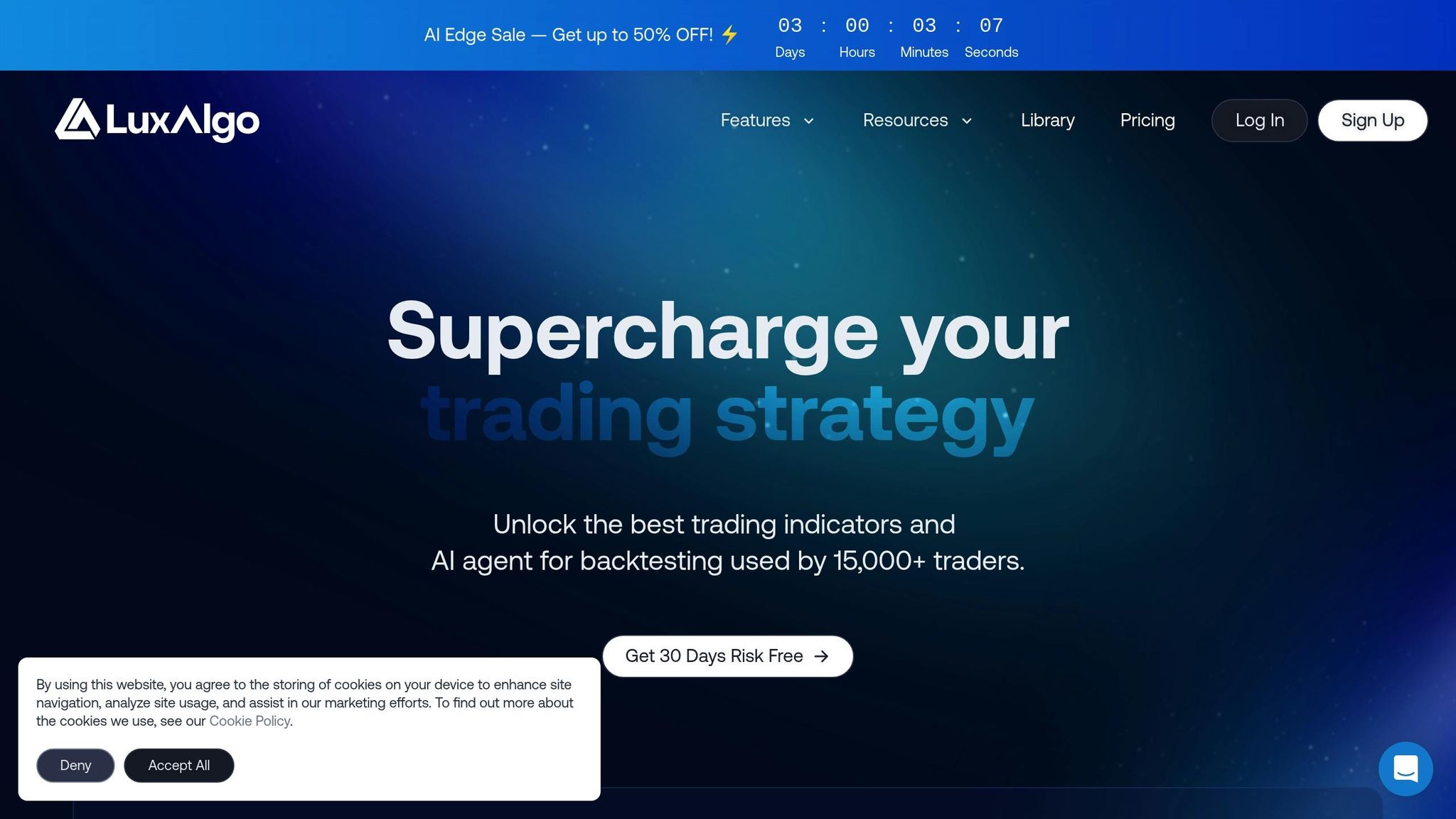
Staying disciplined after a trading loss can be tough, but pairing a solid plan with the right tools makes it easier. LuxAlgo tools provide clear, data-driven signals, helping you base decisions on analysis rather than emotions.
Get Clear Signals with LuxAlgo Indicators
Emotional trading often leads to poor decisions, but LuxAlgo Indicators deliver objective, actionable data. Their three main toolkits—Price Action Concepts (PAC), Signals & Overlays, and Oscillator Matrix—analyse market behaviour from different angles, offering multiple confirmations before entry or exit.
- PAC: Highlights crucial support and resistance, order blocks, and market structures automatically.
- Signals & Overlays: Sends real-time buy and sell alerts, ensuring trades are triggered by market conditions, not impulses.
- Oscillator Matrix: Detects divergences, money flow, and momentum shifts, helping you avoid poorly timed trades.
Validate Your Strategy with LuxAlgo AI Backtesting
If a loss has shaken your confidence, testing your strategy with historical data can help. LuxAlgo's AI Backtesting Assistant lets you evaluate your approach in a risk-free environment.
Stay Accountable with LuxAlgo Screeners and Backtesters
Consistent review and accountability are key. LuxAlgo’s screeners and backtesters help ensure you stick to your plan and refine tactics based on data.
Steps to Take After a Trading Loss
Take a Break to Clear Your Head
After a loss, step away to avoid rash decisions. A break calms your emotions and restores objectivity [13].
Review Your Journal and Backtest Recent Trades
Treat the loss as a learning opportunity [14]. Review your journal, then use backtesting to assess whether your strategy holds up over time [12].
Check Your Emotional Control Progress Regularly
Update your trading journal frequently to spot triggers early [14].
Conclusion: Main Points for Controlling Trading Emotions
Handling emotions after a trading loss is not merely damage control. Combine self-awareness, a clear trading plan, and data-driven tools to transform setbacks into stepping-stones, building stronger discipline and improving long-term results.
FAQs
How can I use a trading journal to stay disciplined and manage emotions after a loss?
A trading journal can be an incredibly effective tool for sharpening emotional control. Consistently document your thoughts, emotions, and actions before, during, and after each trade. Review entries often to identify triggers, reinforce good habits, and minimise impulsive reactions.
What mindfulness techniques can help traders stay calm and focused during volatile markets?
Deep-breathing exercises, regular meditation sessions, and brief post-trade reflections help maintain composure and clarity when markets become volatile.
How can LuxAlgo tools help me stay disciplined and avoid emotional trading after a loss?
LuxAlgo delivers clear, data-backed signals, emphasises risk management, and offers backtesting features, helping traders follow a structured plan and sidestep emotional decisions.
References
- LuxAlgo Home
- TPSL Order Documentation
- Trade-Management vs. Strategy Blog
- Price Action Concepts (PAC) Indicator
- Volumetric Order Blocks Docs
- Market-Structure Docs
- LuxAlgo Toolkits Overview
- LuxAlgo Disclaimer
- Moving-Average Converging Indicator
- RSI Guide Blog
- Support-Resistance Dynamic Indicator
- Market-Structure Trailing Stop
- AI Backtesting Fetching Strategies
- Oscillator Matrix Toolkit
- Setup Alerts Documentation
- Money-Flow Profile Indicator
- AI Backtesting Assistant Breakdown
- Calm Meditation App
- TradeWithThePros – Emotional Control
- TraderSync Emotion-Tracking Guide
- FXGlobe Emotion Control Guide
- QuantifiedStrategies – Mindfulness in Trading
- CEED.trading
- CEED.trading Mindfulness Practices
- Headspace Meditation App
- Markets.com – Mindfulness Techniques
- Dr Rachel Evans – Positive Self-Talk
- Coincub – Mastering Emotions
- VICI Trading – Taking Breaks
- TradeFundrr – Recover from Losses
- TradeFundrr – Improve Performance
- Medium – Power of a Trading Journal


